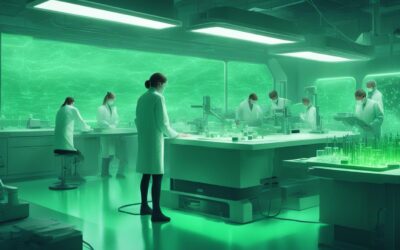Emerging Direct Ocean Capture systems could revolutionise carbon removal efforts, transforming dissolved CO₂ into biodegradable plastics and helping to mitigate the devastating effects of ocean acidification on marine life.
Our oceans are immense reservoirs of carbon dioxide, holding approximately 150 times more CO₂ than the Earth’s atmosphere. This natural storage comes at a cost, as rising CO₂ levels contribute to ocean acidification, a chemical shift that jeopardizes the health of marine ecosystems globally.
Ocean acidification occurs when CO₂ dissolves in seawater, forming carbonic acid, which reduces the pH and the availability of carbonate ions essential for marine life to build shells and skeletons. This degradation threatens corals, shellfish, plankton, and other calcifying organisms, with cascading effects on biodiversity and marine food chains. Regional variations in acidification have been observed, but the broader trend poses a serious risk to ocean health and fisheries, undermining marine biodiversity and ecosystem services.
Experts from the International Atomic Energy Agency and over 150 marine scientists have warned that the rapid pace of ocean acidification is unprecedented in tens of millions of years. If unchecked, much of the ocean could become inhospitable to coral reefs by mid-century, significantly affecting species that depend on these habitats.
The disruption also affects a wide range of marine organisms beyond corals, including fish and seaweeds, many of which face physiological and survival challenges as ocean chemistry changes. The economic and ecological consequences underscore the urgency to address greenhouse gas emissions aggressively.
In facing these challenges, innovative technological approaches are emerging. One promising development is Direct Ocean Capture (DOC), a process that extracts dissolved carbon dioxide directly from seawater through electrochemical means. Although DOC has yet to be deployed widely at scale and initial costs remain high, with estimates around $373 per ton of CO₂, recent research from the Chinese Academy of Sciences and the University of Electronic Science and Technology of China offers a compelling advance. Their DOC system achieves approximately 70% efficiency, operates at an energy cost of about 3 kWh per kilogram of CO₂, and reduces capture costs to around $230 per ton.
This novel method begins by acidifying seawater using electricity to release pure gaseous CO₂, after which the water’s chemistry is restored and safely returned to the ocean. The captured CO₂ gas is then converted into formic acid via a bismuth-based catalytic reactor. Formic acid acts as a high-energy substrate for engineered marine bacteria, specifically a strain of Vibrio natriegens, which metabolise the formic acid to produce succinic acid. Succinic acid serves as a precursor for biodegradable plastics, particularly polybutylene succinate (PBS), offering a sustainable alternative to petrochemical-based plastics.
While this approach is still in the research and development phase, the potential to transform dissolved ocean carbon into valuable biochemicals like biodegradable plastics points to a multifaceted solution. Beyond plastics, the same technology framework may be adapted to synthesize chemicals useful for fuels, pharmaceuticals, and food production. However, commercialization timelines and economic viability remain uncertain, with other companies, such as the Netherlands-based Brineworks, targeting similar goals with competitive pricing projections.
Addressing ocean acidification demands both emission reductions and innovative carbon management strategies. As demonstrated by this emerging DOC technology, coupling carbon capture with sustainable chemical production may provide a dual benefit—protecting marine ecosystems while valorising captured carbon. The coming years will be crucial to watch how these technologies evolve and integrate into broader efforts to safeguard ocean health and combat climate change.




